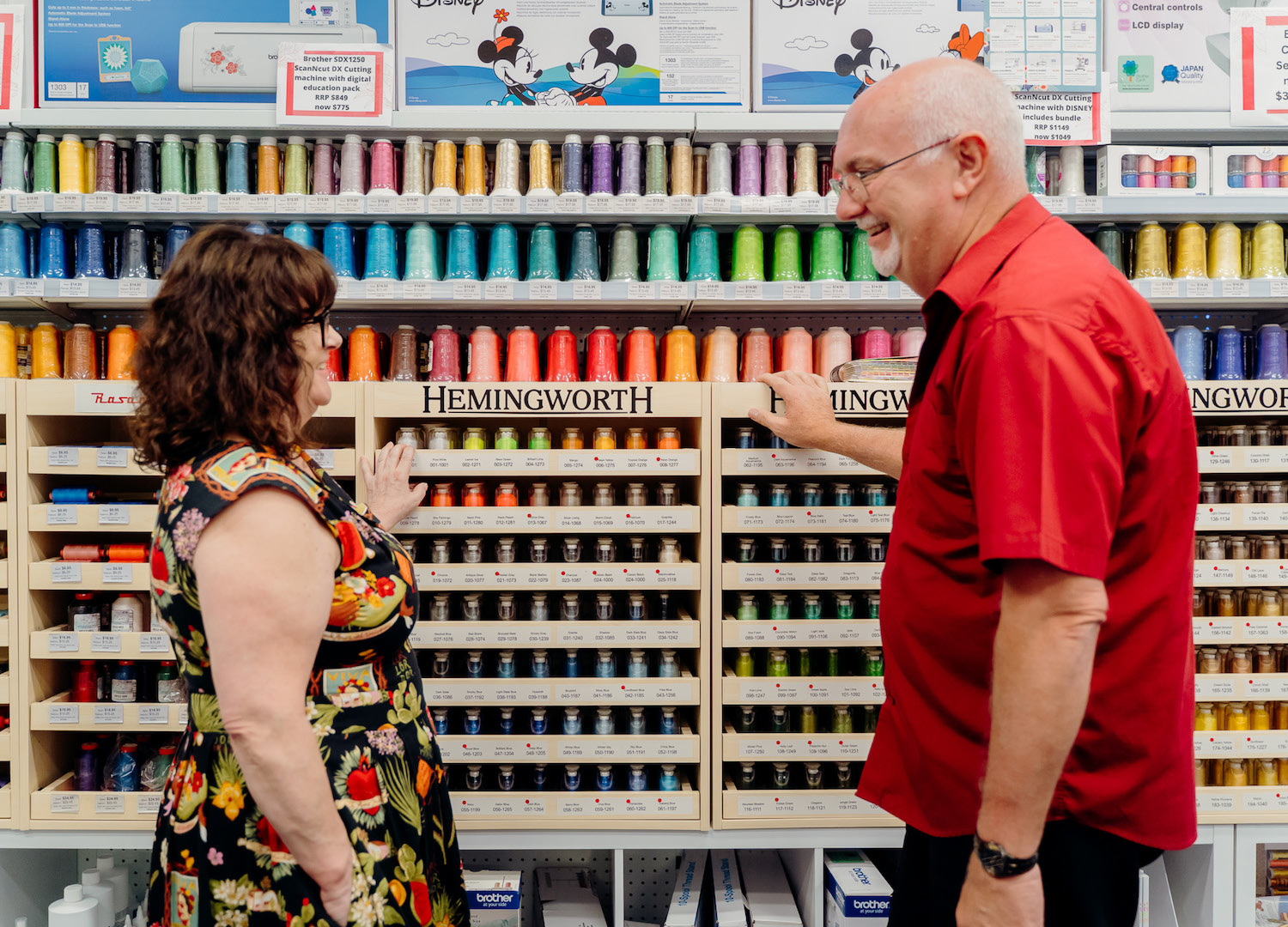
Get Your Embroidery On Point with These Top Industry Tips
words BONNIE LISTON photos KELLEY SHEENAN
A touch of embroidery can elevate a me-made make or give new life to a worn-out but much-beloved item of clothing. And while it’s easy enough to dabble with traditional hand embroidery, the intricate and incredible results of machine embroidery are more affordable and accessible than ever before.
But are embroidery machines still intimidatingly complex beasties with a significant initial outlay? Should they be considered a scary prospect for the faint-hearted crafter to explore? We sat down with the founder and the education manager of Echidna Sewing, Gary Walker and Rachael Clarkson, to demystify those machines and teach you their top tips for becoming an embroidery master.
“Embroidery is fundamentally the biggest part of our business,” Gary says. He entered the sewing world in 1981 at the age of just 15 – taking up an apprenticeship as a sewing machine mechanic with one of Australia’s leading clothing manufacturers – and never left.
“That’s 42 years this year,” he reminisces. “I’m an industrial sewing machine mechanic; I have a love for machinery. That’s the most exciting thing for me and what keeps me so interested in the industry – I just love the technology. Machines are part of my DNA. I couldn’t imagine doing anything else.”
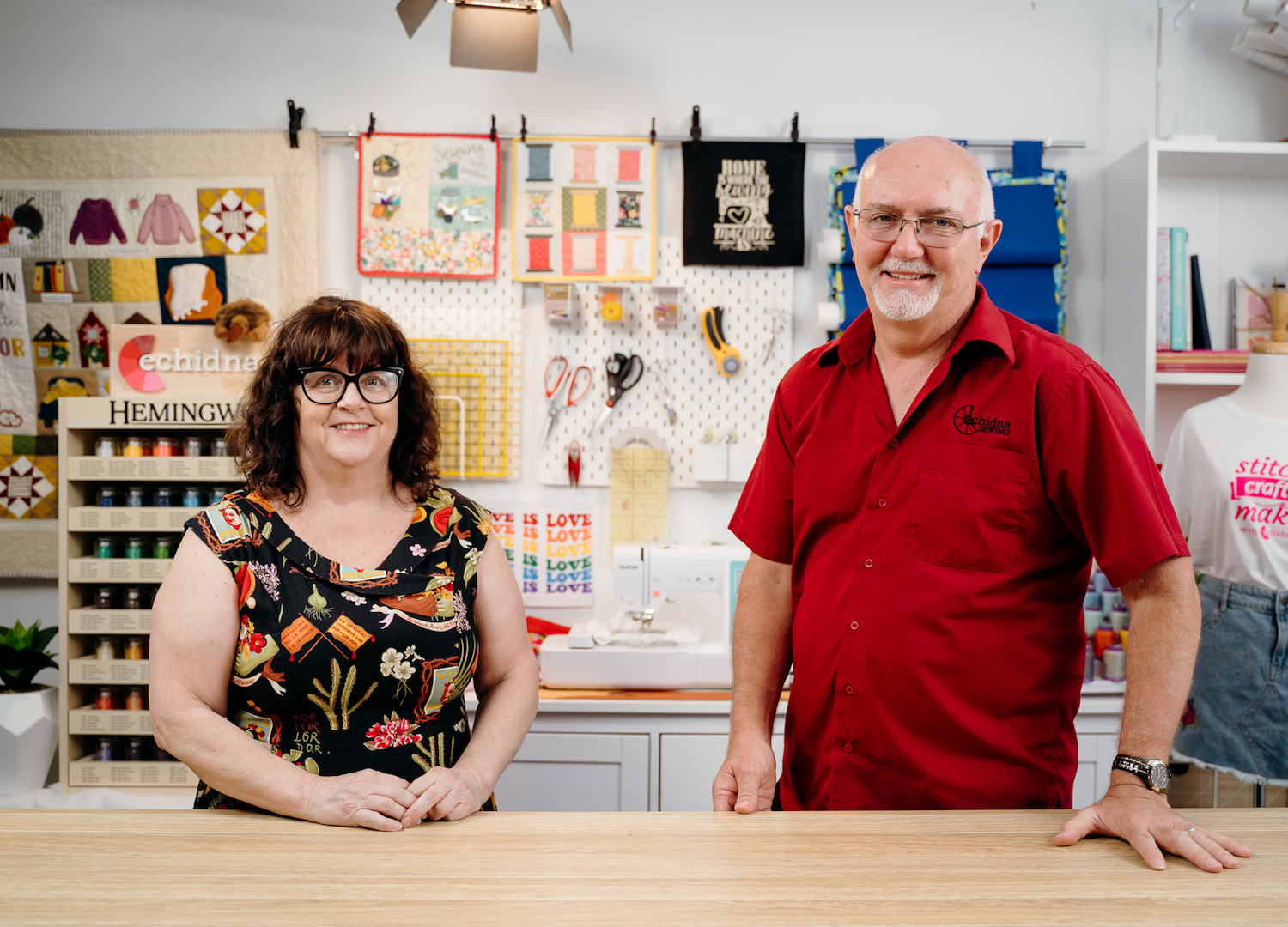
left RACHAEL CLARKSON right GARY WALKER
In the late 80s and early 90s, homestyle embroidery machines – which could create beautiful automatic embroidery to the same standard as commercial machines – began to emerge. “All of a sudden, we had this incredible technology that almost reinvented sewing machines,” says Gary. “I was running a sewing machine business at that time and thought, ‘Oh, my goodness, this is a game changer. I want to be involved in machine embroidery.’”
Machines are part of my DNA. I couldn’t imagine doing anything else.
He threw himself into the world of home embroidery wholeheartedly and by 1995, he had invented and patented a unique thread stand device designed to help make using home embroidery machines easier.
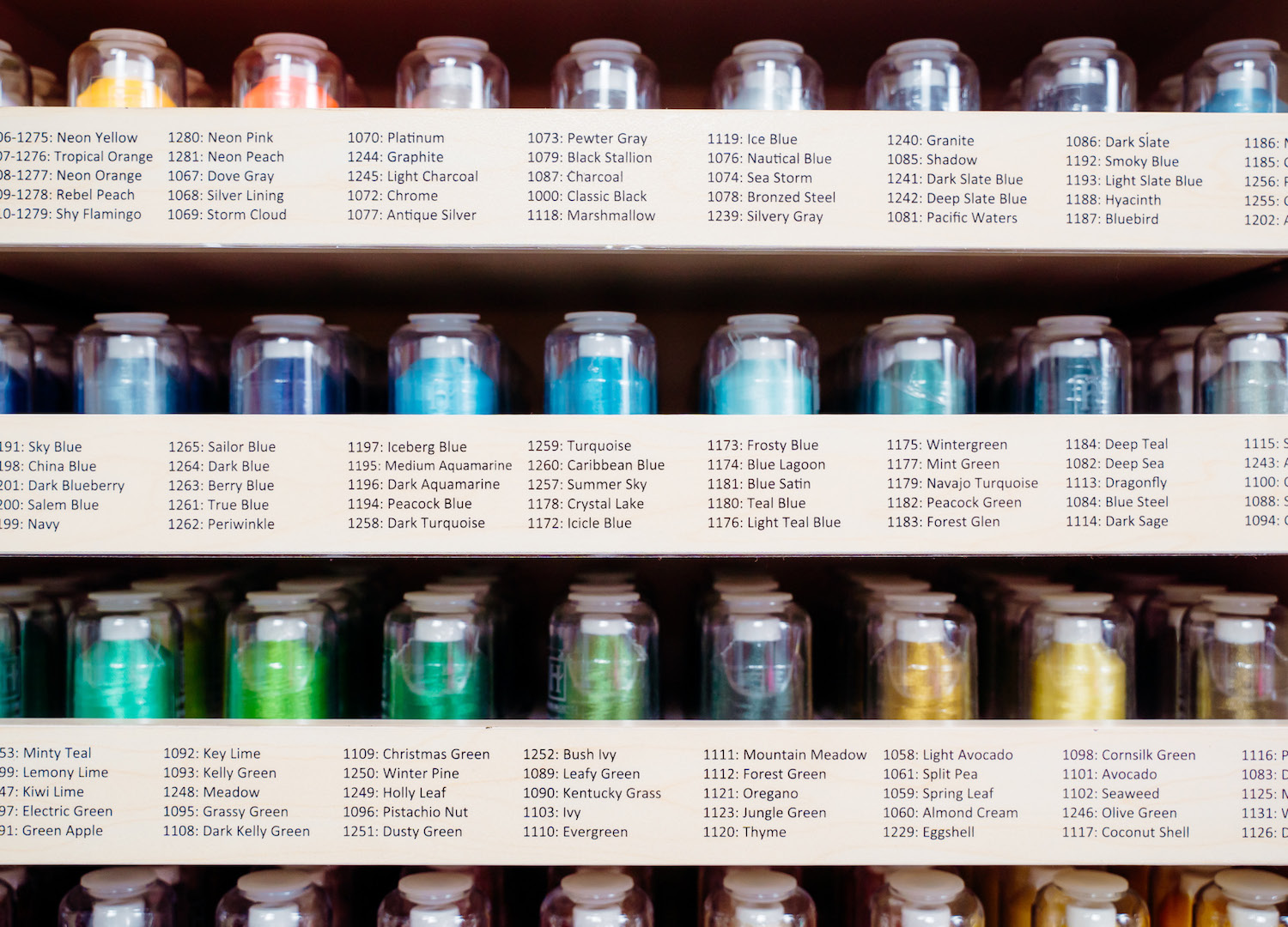
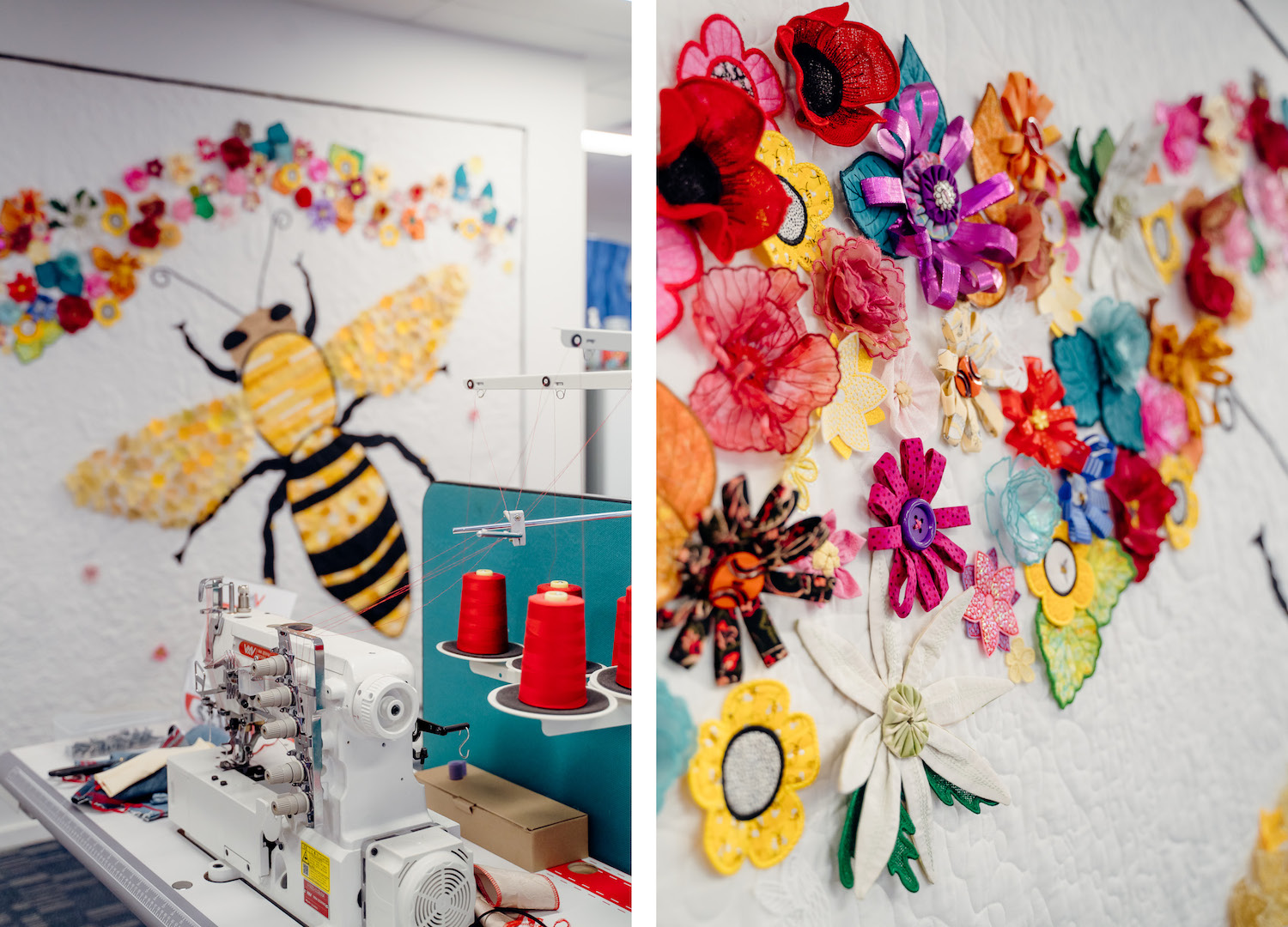
“That’s kind of how Echidna got its name,” shares Rachael – the spiky spools of thread reminded them of the adorable Australian monotremes. And to this day, Echidna Sewing and its staff remain buoyed by a genuine passion for the potential of embroidery.
“I think it’s that ability to just be so individual – and now with software that’s so inexpensive, anyone can sit down and create anything they want, and apply it to anything they have,” Gary says. “Like, what else can you do that with? You don’t need serious sewing skills to do it. Going and recycling an old shirt, changing the whole feel of a pair of pants or whatever it is with just a bit of embellishment is super, super easy.“
“Embroidery gives you so many possibilities,” adds Rachael. “You can make things that you’ve probably never even considered, like earrings, like patches. I like to challenge what you can do with machine embroidery. I like to think outside the square. For example, if I wanted to hide, let’s say a spill on my t-shirt, I could stitch out these crocheted pieces of lace and attach them. You’re just limited to whatever you can think of.”
You can’t begin to comprehend the impact that this type of hobby has had on people.
“The single most important thing for me is what it does for our customers – the impact it has on people’s lives who need something,” says Gary. “That ability for them to settle back into a hobby they really get amazing satisfaction out of, that’s relatively affordable, is very creative and soothing and calm for them – the impact that has on people is just incredible. We all as individuals and human beings, need something to retreat to. You can’t begin to comprehend the impact that this type of hobby has had on people.”
“I think you have to not get caught up in the stereotype,” he continues. “You have to have an open mind. It’s way more than just a logo on a shirt. If someone said to me, ‘Do you think I should get an embroidery machine?’ Of course, yes, you should.”
But how then does one get started?
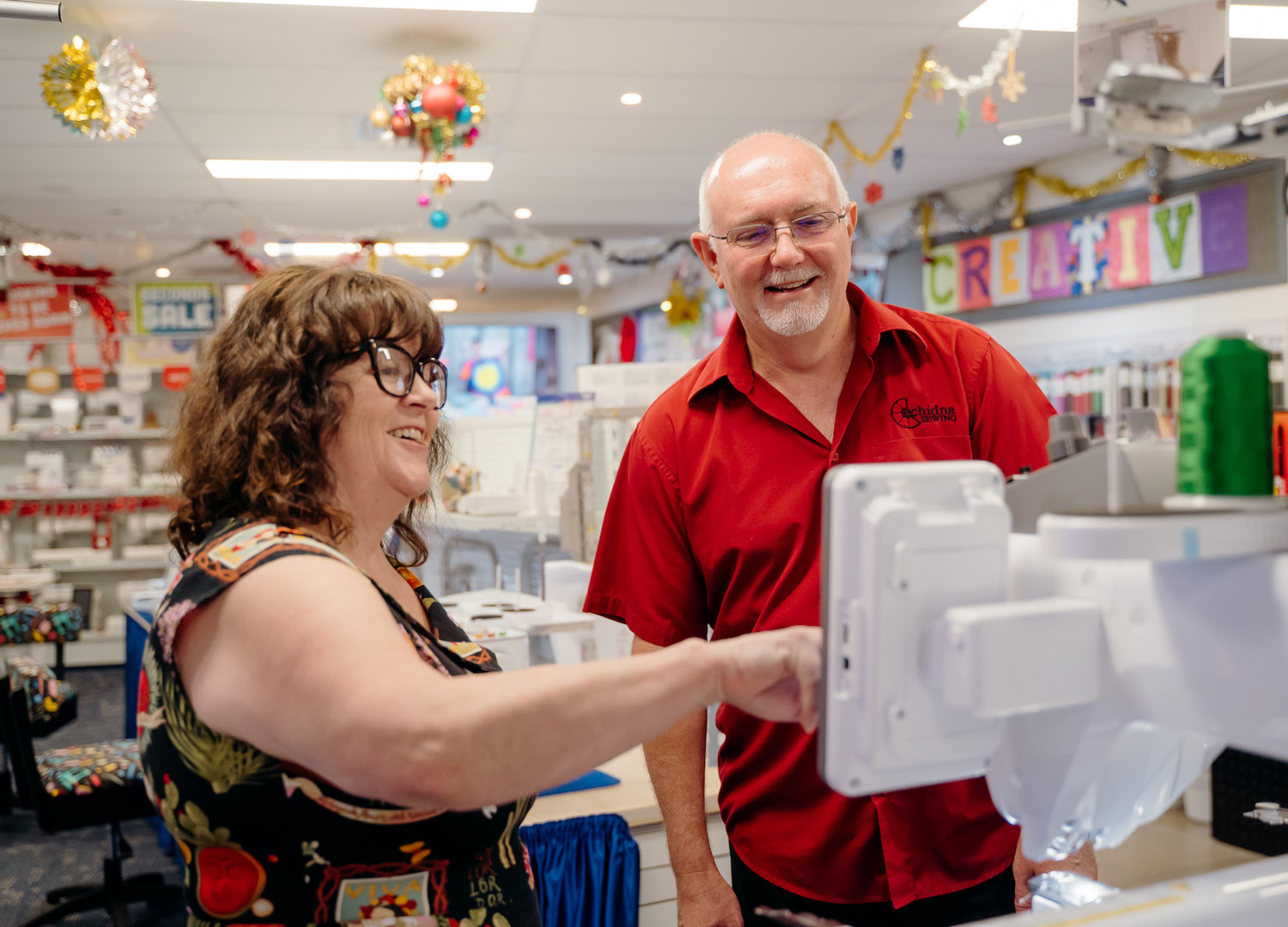

GET EDUCATED
“Fundamentally, my first tip would be to be prepared to be guided,” says Gary.
“We’re all guilty of it – we buy something, we say, ‘I’m fine, I’m just gonna get into it.’ Just go slowly. Go to our website, watch a couple of videos, and know that what you’re about to embark on is not difficult, there are just rules.”
The plethora of educational material on Echidna’s site – from video tutorials to virtual courses – falls under the purview of Rachael.
“One of the things that I always say is, ‘Embroidery is more of a science actually than sewing is.’ There are some principles you need to understand to be effective,” she says. “But that’s what’s so cool about it! Once you learn the basics and the fundamentals and go through the process, the fact that there’s a science to it means there’s a very easy way to succeed if you just follow the rules.”
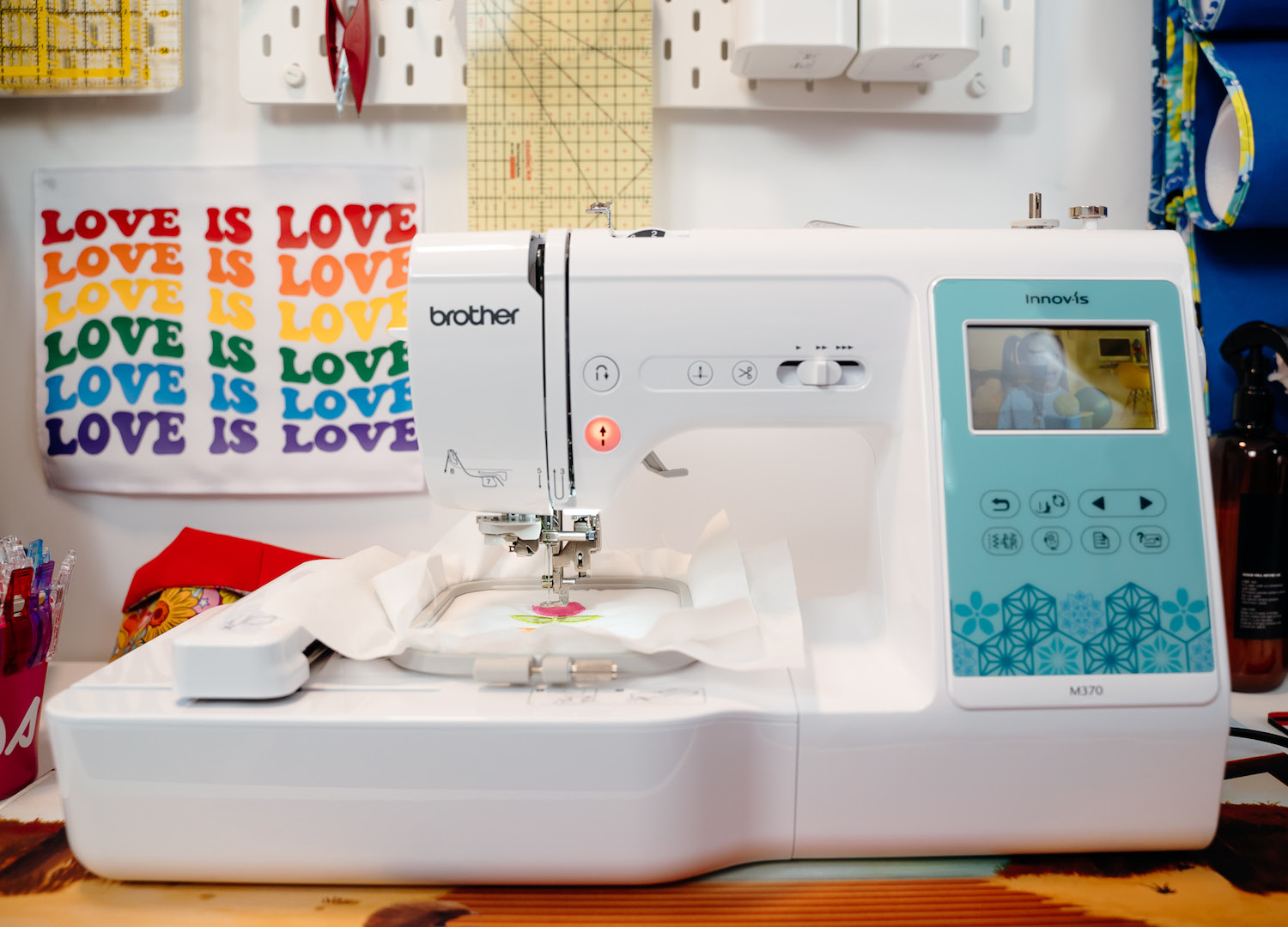
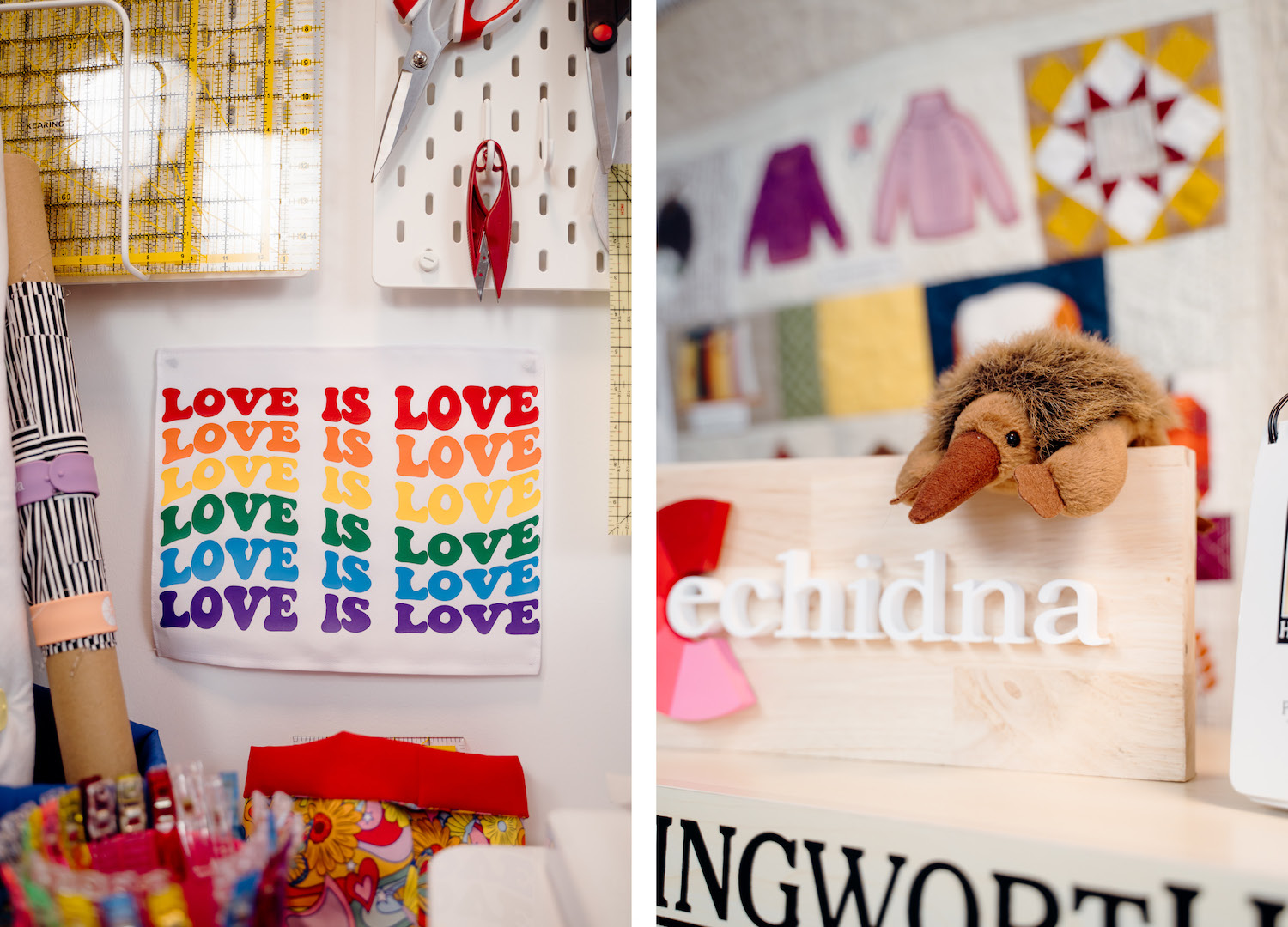
CHOOSE YOUR WEAPON
“The second tip is just to have a good piece of equipment,” Gary advises. “You can’t have success if what you’re trying to have success on is not up to the task. And here’s a fundamental problem in the sewing industry – we see so many people enter the sewing market and go and buy a basic little mechanical machine and they have a bad experience. Is it because the machine is crappy? Not really, the machine is probably ok if you know how to use it. But they’re far more complicated and less forgiving than, say, some of the better equipment – the computerised machines.
“People have this bad experience and go, ‘Sewing’s not for me. I’m gone, I’m not doing it anymore.’ That’s, I feel, one of the biggest issues that could definitely be overcome if you follow good guidance, have good equipment and think logically.”
They’re so much easier to use, and they open up this whole opportunity that will blow your mind.
Echidna recommends the Brother M370 as an entry-level sewing and embroidery combo machine. “If someone said to me, I’m thinking of getting a sewing machine, I would say, well don’t just get a sewing machine, get a little combination machine, because they’re not that much more expensive,” says Gary. “They’re so much easier to use, and they open up this whole opportunity that will blow your mind if you’re prepared to open your mind to it.”
“Backed with a comprehensive warranty and ample online support, the Brother M370 is a perfect all-round machine for someone starting on their sewing journey,” he enthuses. “Ease of use, quality stitching and the included embroidery attachment combine with an impressive but important feature list to provide a machine that a beginner will comfortably grow into, not out of.“
WANT MORE SEWING AND DIY CONTENT? RIGHT THIS WAY!

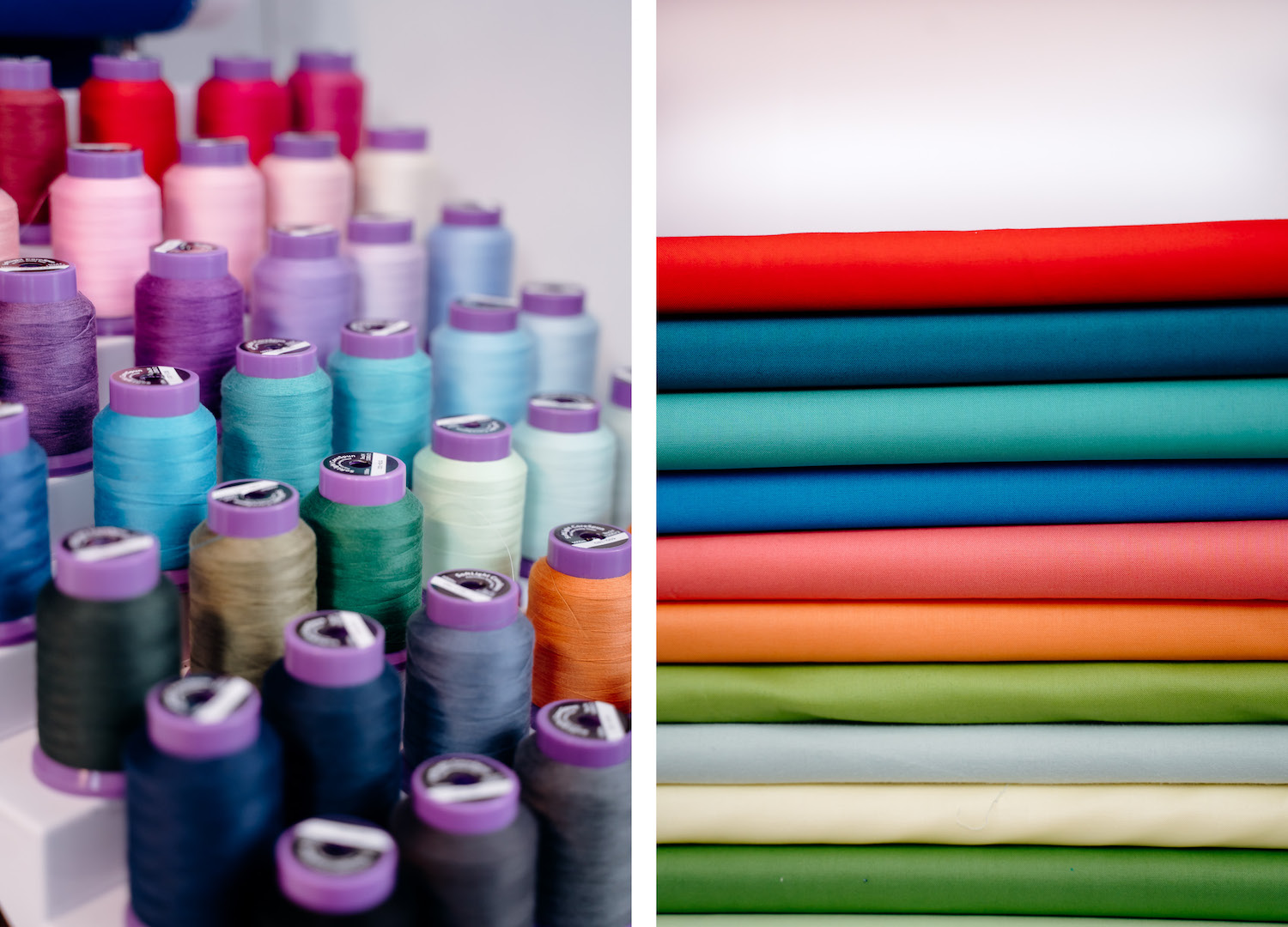
GEAR UP
As well as a good machine, you’ll also need to equip yourself with quality materials. “Don’t go digging out a piece of crappy fabric out of your fabric drawer,” says Gary. “And don’t use that horrible thread that you’ve had sitting around because your grandma gave it to you.“
“For machine embroidery, you do need other things that you don’t need for sewing,” adds Rachael. “It’s all about stabilising your fabric so you can embroider on it. We’ve had people come in and say, ‘Oh someone told me to use interfacing.’ Interfacing doesn’t work so they fail and ruin their top. I think it’s so important to understand that you need certain things to be successful. We have this beginner’s pack of embroidery stabilisers, which is just a small roll of four of the core stabilisers you need to be successful with machine embroidery.”
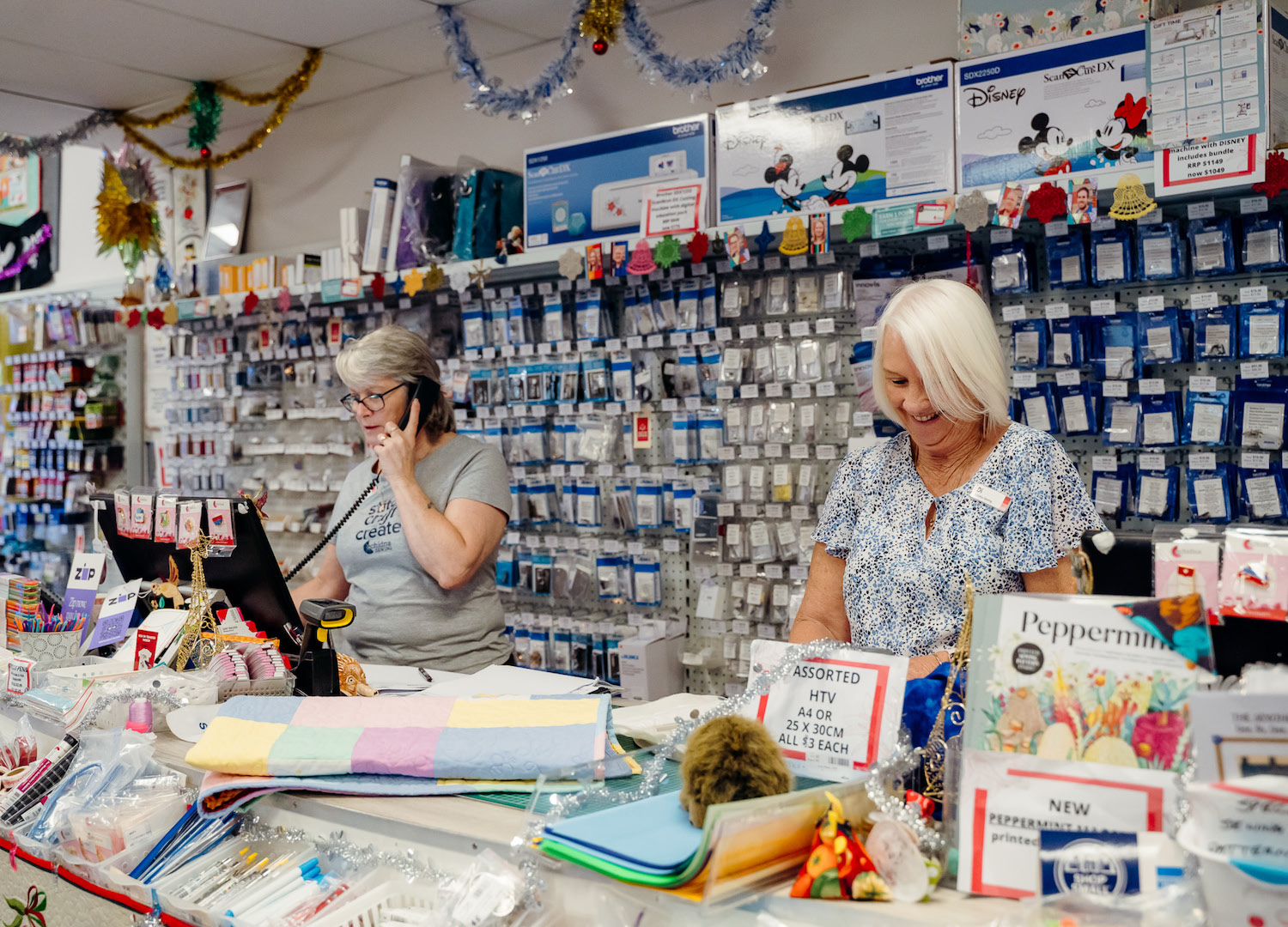

REACH OUT
Finally, the pair emphasise how important, and easy, it is to reach out for help, wherever you are on your embroidery journey.
“I think experts are important,” says Rachael. “How many people come to us and say, ‘We’ve had so many issues’? They’d show us and we’d go, ‘Oh, your tension’s wrong – or you didn’t use the right stabiliser.’”
Gary concurs: “Knowing as an entrant to a new market that you can contact a supplier regardless of what mechanism you want to use – whether it’s online, phone, email, chat, whatever – brings such a feeling of confidence.
It’s always inspiration, aspiration and education. How can I make you want to try?”
“One of the things that annoys me is when people don’t contact us. They go through a month or two months of total frustration, and eventually decide, ‘I’m gonna ring Echidna because I’m really angry.’ They say it’s been happening for months and I say, ’Well, why didn’t you just contact us?’ Because 99 times out of 100 we can fix the problem over the phone.”
“And usually it’s operator error which could be as simple as using an incorrect stabilizer or even a needle that needs replacing,” Rachael adds.
“You could summarise all of this by saying just have quality ingredients. And those ingredients include advice, equipment, supplies and education,” concludes Gary.
“For me, it’s always inspiration, aspiration and education,” says Rachael. “How can I make you want to try?”

